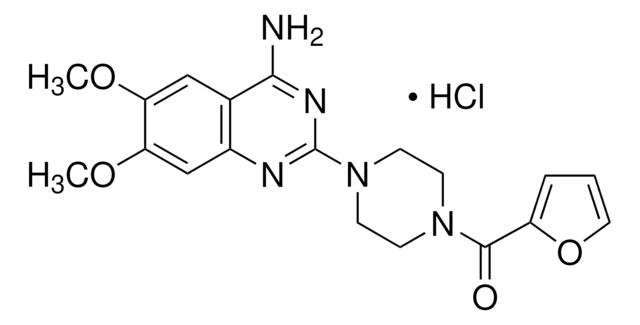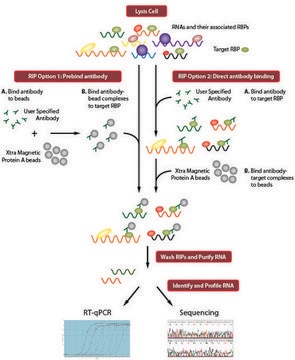推薦產品
一般說明
组织样品在TRI reagent®中均质或裂解,即可溶解RNA、DNA和蛋白质。加入氯仿或1-溴-3-氯丙烷,然后离心,混合物将分离为三层:含RNA的水相、含DNA的中间相和含蛋白质的有机相。随后即可通过分离不同相层,得到相应组分。
應用
- 从各种组织样品和细胞中分离总RNA [1][2][3][4]
- 裂解单核细胞 [5]
- 从感染SARS-CoV的Vero细胞中分离细胞质RNA [6]
- 从感染甲型流感(H5N1)病毒的MDM(单核细胞衍生的巨噬细胞)中分离总RNA [7]
- 制备SARS-CoV培养物的病毒裂解液,以便为SARS-CoV疫苗开发创建编码S糖蛋白的克隆 [8]
使用TRI reagent®分离的RNA、DNA和蛋白质可继续用于各种下游应用,如克隆、PCR、RT-PCR、Northern印迹、mRNA分离、体外翻译、RNase保护测定、限制酶消化、Southern印迹、SDS-PAGE和蛋白质印迹。
特點和優勢
多用途:TRI Reagent®同时适于大量或少量组织或细胞,同时支持多种类型的样品,包括人、植物、酵母、细菌和病毒来源样品。
高效:相对于传统硫氰酸胍/氯化铯方法,TRI reagent®产量更高。从新鲜组织或细胞开始的完整RNA提取流程可在一小时内完成。
- 可轻松扩展的RNA分离
- 可适用于多种来源:人、植物、酵母、细菌或病毒
- 相对于传统的硫氰酸胍/氯化铯具有更高的产量
其他說明
法律資訊
訊號詞
Danger
危險分類
Acute Tox. 3 Dermal - Acute Tox. 3 Inhalation - Acute Tox. 3 Oral - Aquatic Chronic 2 - Eye Dam. 1 - Muta. 2 - Skin Corr. 1B - STOT RE 2
標靶器官
Nervous system,Kidney,Liver,Skin
安全危害
儲存類別代碼
6.1A - Combustible acute toxic Cat. 1 and 2 / very toxic hazardous materials
水污染物質分類(WGK)
WGK 2
閃點(°F)
174.2 °F - closed cup
閃點(°C)
79 °C - closed cup
客戶也查看了
文章
Cultrex™ 3-D Culture Cell Harvesting Kit provides an optimized and standardized solution for the isolation and normalization of cell lysates from 3-D Culture Matrix™ BME or Laminin I for subsequent biochemical analysis.
The availability of simple methods for purification of DNA and RNA has greatly facilitated the analysis and characterization of the genome and gene expression. There is a demand to isolate DNA and RNA rapidly and conveniently from a variety of cellular sources, including cells and tissues from mammalian, plant and bacterial cultures.
條款
Protocol for Anti Ago-RNA Immunoprecipitation from mammalian cells using the RIP kit
相關內容
An overview of cell lysis and protein extraction methods including detergent solubilization, freeze-thaw lysis, osmotic shock, sonication, enzymatic cell lysis, and mechanical disruption techniques such as Dounce, Polytron, and mortar and pestle homogenization.
An overview of cell lysis and protein extraction methods including detergent solubilization, freeze-thaw lysis, osmotic shock, sonication, enzymatic cell lysis, and mechanical disruption techniques such as Dounce, Polytron, and mortar and pestle homogenization.
An overview of cell lysis and protein extraction methods including detergent solubilization, freeze-thaw lysis, osmotic shock, sonication, enzymatic cell lysis, and mechanical disruption techniques such as Dounce, Polytron, and mortar and pestle homogenization.
我們的科學家團隊在所有研究領域都有豐富的經驗,包括生命科學、材料科學、化學合成、色譜、分析等.
聯絡技術服務




